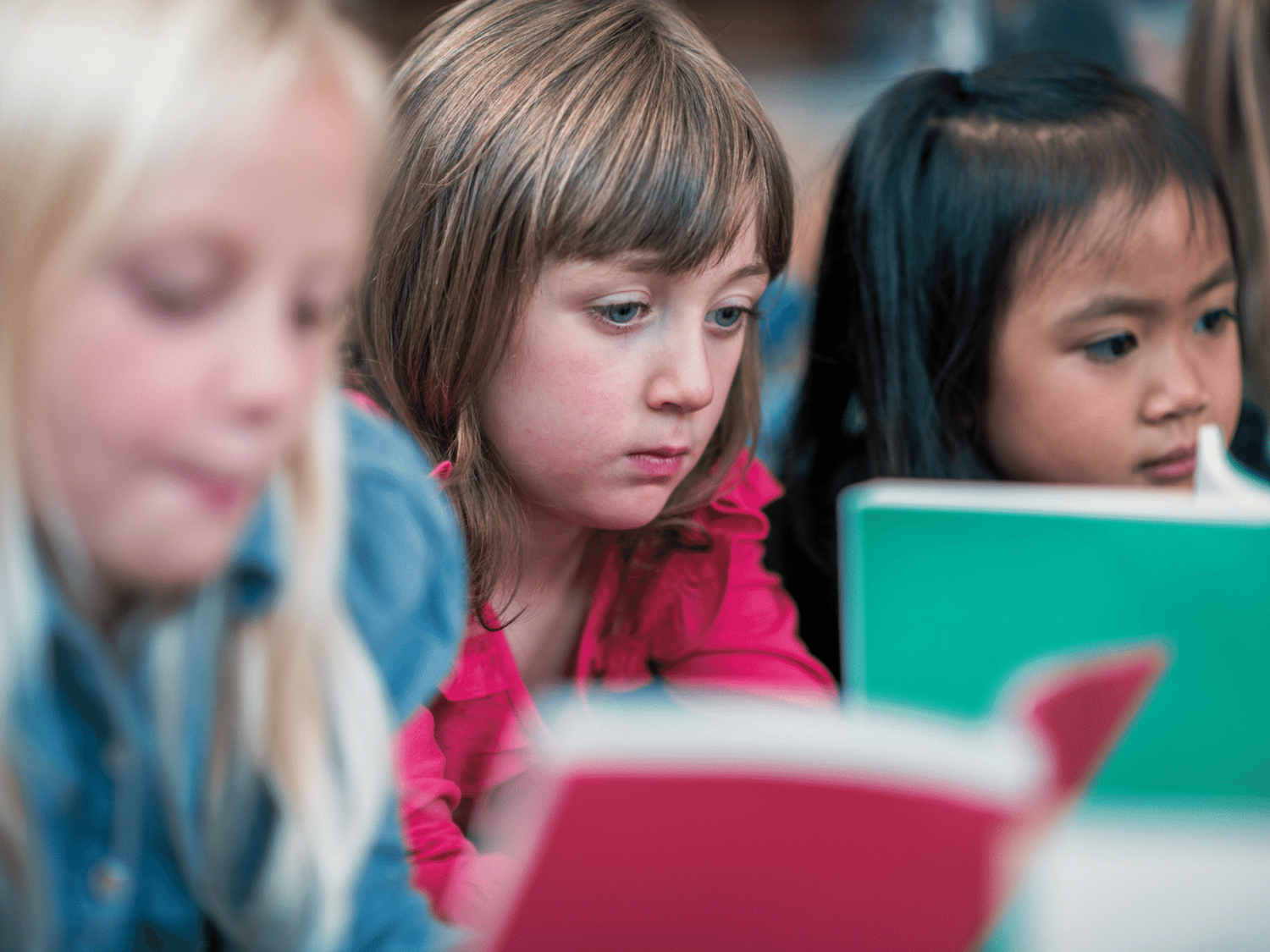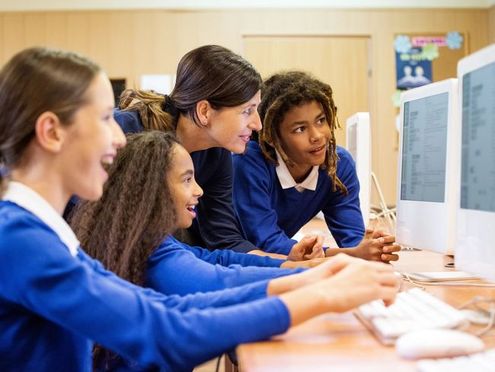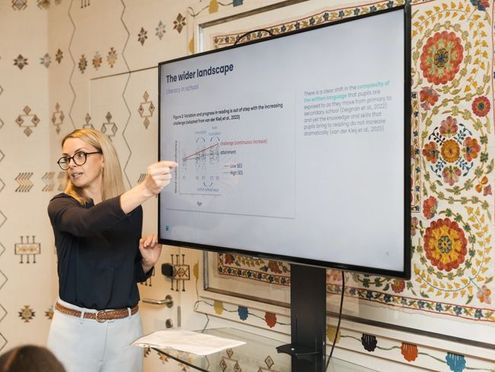We know the curriculum-wide impact of improving literacy. To share expertise from the Bedrock Learning school community, we held a webinar with three primary and secondary school leads giving their tips on:
- Engaging staff with a whole-school approach to literacy
- Implementing quick wins and long-term approaches
- Evaluating the impact of a whole-school approach
On our panel alongside Bedrock’s Alex Randle, Head of Engagement and former English teacher and GCSE examiner were:
- Ellie Ashton – Head of English at John Smeaton Academy.
- Craig Early – Headteacher at Wygate Park Academy.
- Tara Hobson – Reading, Writing, Communication & Maths Lead at Hailsham Community College.
What are your tips for getting staff invested in school-wide literacy?
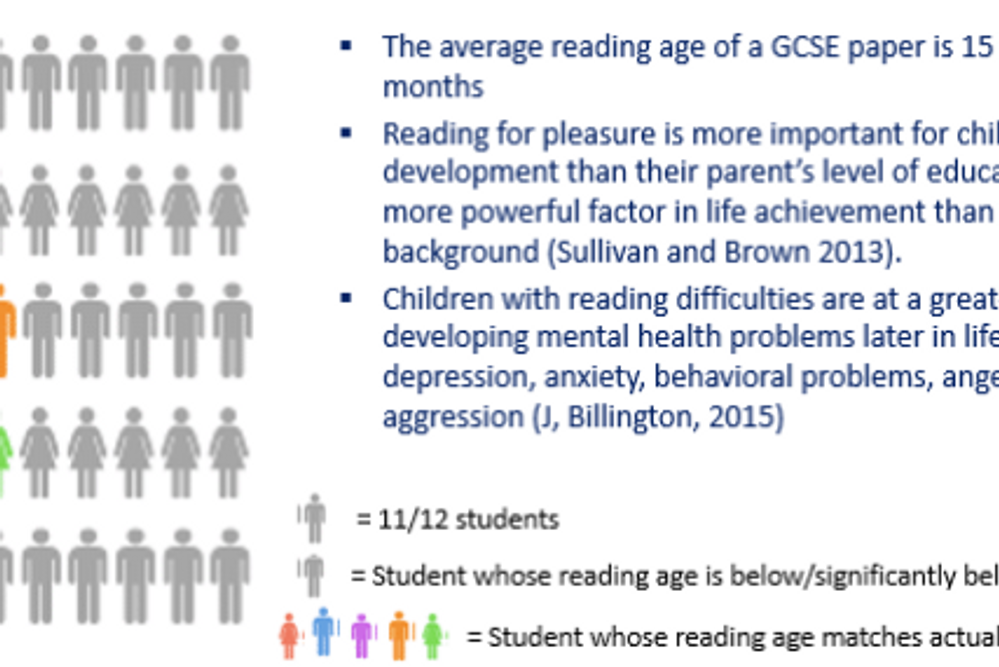
Craig: Staff can get a bit anxious about the impact of any new strategy on their workload, so we ensure we introduce actions that are easy for us to explain and for them to implement, but that have a big impact.
Ellie: I agree, quick wins are crucial to getting staff buy in! Our whole-school CPD training has enabled all of our teachers to realise the importance of reading. One activity that particularly resonated was an infographic (seen above) I created with ‘blob people’ representing our learners whose reading age is below their actual age.
It was hard-hitting in portraying the extent of our challenge – I had history and science teachers who were then prompted to commit to supporting these students.
Tara: We use the Access Reading Test to check our students’ reading ages and show teachers students’ literacy data so they can ensure each lesson is aimed at the reading age of that class. We also created seating plans that allow them to see students’ reading ages easily.
I’m creating a booklet to help teachers understand different reading ages, so that they can adjust their approach to teaching vocabulary accordingly. I look at Bedrock data and saying to teachers: ‘X% of students are studying these words from this block – let’s stretch them by showing them these words from this block.’
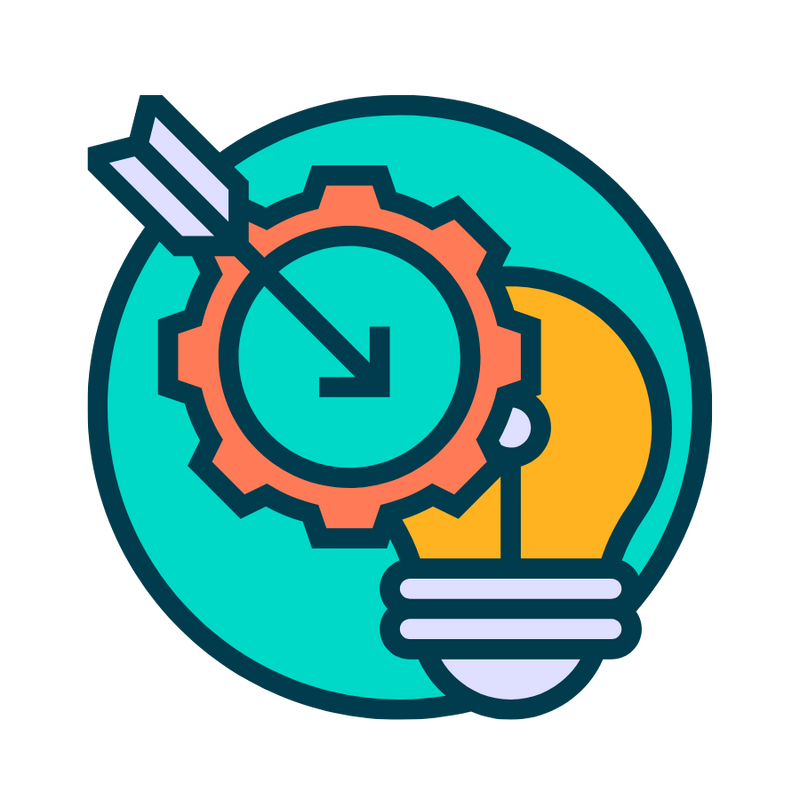
Can you share some of your successful approaches?
Craig: We have a two-pronged approach: reading for purpose – to build skills and confidence – and reading for pleasure. On the former, we use scheme books linked to reading ability, such as the Oxford Reading Tree. We introduced Bedrock to challenge our students and it’s been very successful – the Alpha test, which assigns blocks according to ability, is crucial for challenging students.
In terms of ‘quick wins’ for reading for pleasure, we have:
- Daily 15-minute reading sessions in which the teacher reads to their class.
- Daily silent reading time for students to enjoy a book.
- Displays of class texts on classroom doors, so everyone can see what each class is engaging with; as I walk around school, I ask students about the text they’re studying.
- Class displays of Tier 2 and 3 words, as well as new words from students’ books and students’ definitions. When I walk between classes, I ask students at random what words on the boards mean.
- E-books, shared alongside physical books, to reflect the blend of books in many homes and to encourage parents to get involved.
- Reading fairs and competitions that engage students and parents.
Ellie: When students get into reading, everything else falls into place. Some of our activities that support that include:
- Reading time for 20 minutes each day – tutor and tutees all read the same book.
- “Reading for pleasure” books; when students encounter a new word in these, they write the definition onto a Post-It note.
- Making knowledge visible – the title of every book a student reads is written on a card and stuck to their class door, making for corridors that are very visual and empowering!
- Tapping into national events like World Book Day and Roald Dahl Day to improve the status of reading.
- Promoting our library – 94% of students have a book on loan!
- Literacy lessons in KS3, which consist half of reading and half of studying on Bedrock. Students have personal reading journals in which they log books they’ve read, new vocabulary they’ve learned and any reviews they have written, plus a list of their new Bedrock vocabulary – these journals capture the full picture of their vocabulary learning.
Tara: We want to instil a passion for reading and encourage students to read for pleasure.
- KS3 mentors read to mentor groups for 20 minutes once a week. Reading to students helps them access new vocabulary they may not be able to read yet, as well as encouraging them to discuss new words and their meanings. It’s so relaxed you can hear a pin drop!
- Students do silent reading at the start of class, or look at the key words we’ve displayed at the front of the class, identifying their roots and affixes and breaking down their meaning ahead of the lesson starting.
- We focus on introducing Tier 2 and 3 vocabulary into our lessons across the curriculum. I explain definitions and give examples, and then I encourage students by asking if they can hear, see or act out new vocabulary.
- I award students with achievement points when they complete Bedrock lessons, and I arrange catch-up clubs in school for those who haven’t. I encourage parents to use their free parental login to monitor their child’s usage and progress. When students complete two Bedrock lessons in a week, they earn two achievement points. When they have 50 points, they earn a token for our book vending machine!
- I engage students via social media [In fact, in the Bedrock office, Tara Hobson is known as the TikTok teacher!]. During lockdown, we did lots of fun activities around vocabulary – hundreds of students entered competitions about their favourite books.
What impact have the whole-school literacy strategies you’ve put in place had?
Craig: Despite talk of lost learning during lockdown, our students returned at the same level or better. Reading books and using Bedrock at home has obviously had an impact!
Recently, a lower-ability Y6 student learned the word ‘arid’ on Bedrock. When it then came up in class, he immediately pointed out that it was his Bedrock word. The whole paragraph made sense to him because he understood that single word.
Anecdotes like this have reassured us our focus on vocabulary and reading is crucial.
Ellie: Bedrock has underpinned the impact of our approach. When I tracked our NGRT diagnostic test results against Bedrock completion levels, it revealed a direct correlation between consistent completion of Bedrock and an improvement in reading age. For example, Y9 boys who had completed over 75% of Bedrock lessons had improved their reading age, on average, by 25 months in a year, despite lockdown.
Along with ‘soft data’, such as students articulating their pride in achievements such as topping the Bedrock leaderboard and their increase in confidence, this confirms that our implementation of Bedrock, complemented by what we do in lessons and our focus on reading for pleasure, is having a positive impact.
Tara: I have noticed the same as Ellie. Despite only using Bedrock for 18 months, we can see Bedrock’s impact. The reading ages of two high-usage students have increased by three years in that time!
